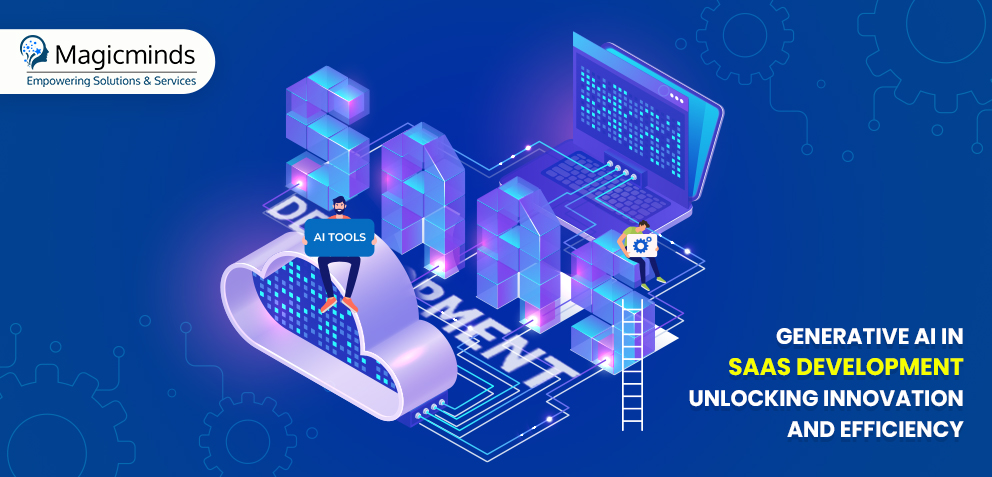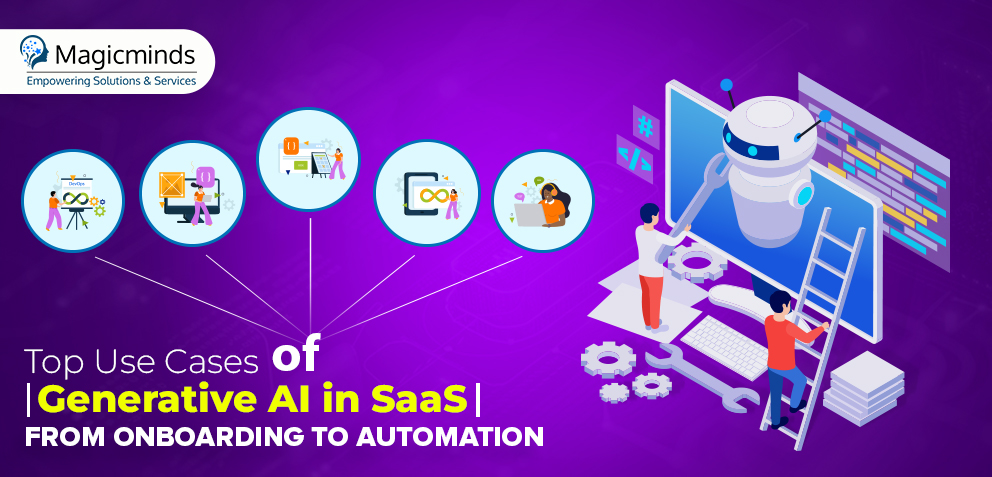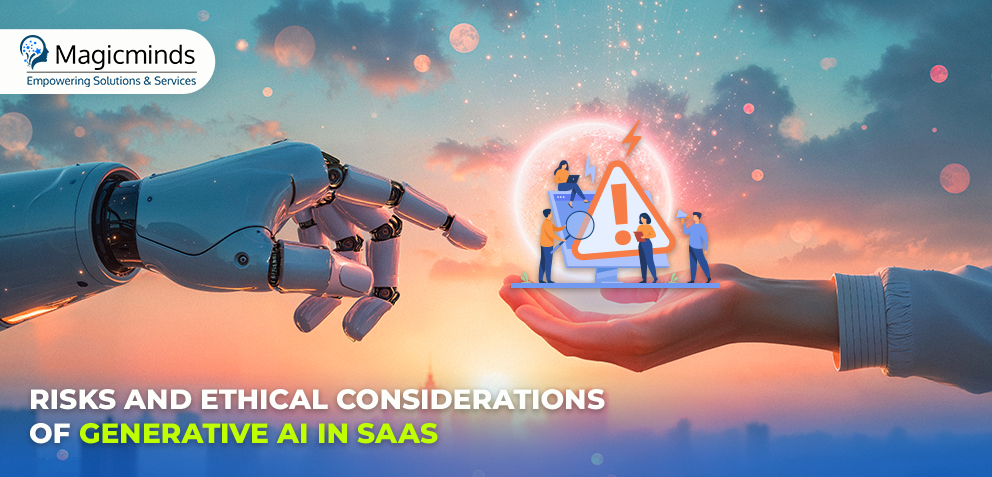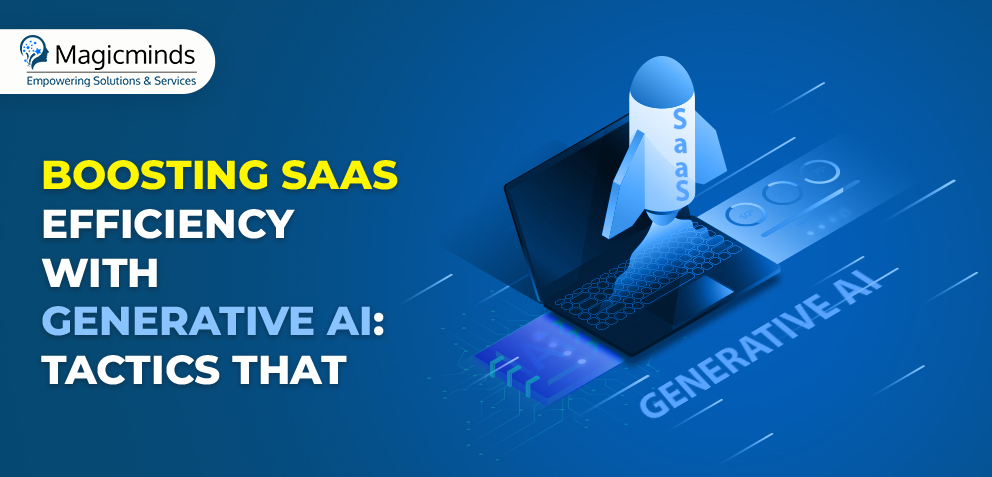Generative AI in SaaS Development: Unlocking Innovation and Efficiency

 Stay In-the-loop
Stay In-the-loop
Get fresh tech & marketing insights delivered right to your inbox.
Share this Article
Tags
Category
- .Net Developer
- Adtech
- Android App Development
- API
- App Store
- Artificial Intelligence
- Blockchain Development
- Chatbot Development
- CMS Development
- Cybersecurity
- Data Security
- Dedicated Developers
- Digital Marketing
- Ecommerce Development
- Edtech
- Fintech
- Flutter app development
- Full Stack Development
- Healthcare Tech
- Hybrid App Development
- iOS App Development
- IT Project Management
- JavaScript development
- Laravel Development
- Magento Development
- MEAN Stack Developer
- MERN Stack Developer
- Mobile App
- Mobile App Development
- Nodejs Development
- Progressive Web Application
- python development
- QA and testing
- Quality Engineering
- React Native
- SaaS
- SEO
- Shopify Development
- Software Development
- Software Outsourcing
- Staff Augmentation
- UI/UX Development
- Web analytics tools
- Wordpress Development
Generative AI powers machines that generate new content, such as text, code, images, or designs, by interpreting cues from existing content. It’s not just about copying; it learns from familiar patterns and then gets creative. Honestly, its emergence is a major turning point in how our software evolves. Companies are now weaving generative AI into SaaS development projects so complex tasks become automated, interactions with users get a personal twist, and innovations appear to come quicker.
For those deep into AI SaaS development, generative AI kind of gives them that extra competitive boost. It powers apps that learn and shift in real time, offering dynamic performance that’s both surprising and practical. Many find this mix of learning and adapting fascinating, even if it sometimes feels a bit unpredictable.
Overall, this article looks at how generative AI is reshaping the SaaS scene, touching on real-world examples, varied strategies, and even some intriguing hints of what might come next.
Understanding Generative AI in the SaaS Context
What is generative AI?
Generative AI is all about crafting new stuff by learning from example data. It writes codes, creates images, sums up long documents, and even chats.
- Examples for AI SaaS development: GPT-4 (text), DALL·E (images), and Claude (conversational AI).
- It usually works with deep learning setups, often leaning on models such as transformers or GANs.
Overview of SaaS (Software as a Service)
SaaS, which stands for Software as a Service, simply means getting your software straight over the internet without installation.
- This approach typically involves apps hosted in the cloud, offered via subscriptions, and built to scale with demand.
- In traditional setups, SaaS development covers everything from writing the code and thorough testing to deploying and keeping the apps running.
Intersection of Generative AI and SaaS
When you blend AI SaaS development platforms, things get interesting, automating tasks, generating content, and enhancing personalization.
- Core functions like customer support, app development, data analysis, and marketing all get an AI-powered boost.
- Notably, innovations now feature AI-led design, auto-generated code snippets, and real-time personalization of data.
Grow Faster and Unlock Your Potential with AI & ML Development Services
Transform your business with cutting-edge AI and ML solutions.
Benefits of Integrating Generative AI into SaaS Development
Integrating generative AI into SaaS development is revolutionizing the industry. It fosters innovation, expedites workflows, and enhances user experience by managing routine tasks, creating content instantly, and providing accurate predictions.
Accelerated Development Cycles
- Coding, testing, and even documentation get handled automatically.
- Code prototypes roll out quickly, helping products hit the market sooner than expected.
- Developers often get smart, unexpected tips mid-process.
- Shorter cycles mean feedback comes in faster, making tweaks a lot less painful.
Enhanced Personalization at Scale
- The system picks up on how people use the software, tweaking interfaces almost like a chameleon adapts to its surroundings.
- It builds dashboards, gives out recommendations, and even generates content that feels surprisingly personalized.
- Real-time adjustments during tests sometimes spark new ideas.
- In most cases, users end up happier when the experience feels tailor-made, even if it’s all driven by code.
Cost Efficiency
- Routine, repetitive tasks get trimmed down through automation—no more wasted time on the same old work.
- There’s less need for giant teams, which lightens the load on the budget significantly.
- With insights from AI, resource allocation ends up being more about smart spending than guesswork.
- For AI SaaS development companies, the overall return on investment often improves as fewer resources are wasted and more are directed towards driving innovation.
Improved User Engagement and Retention
- AI-driven chatbots and assistants are available around 24/7, ready to help whenever a query pops up.
- They sometimes suggest content, features, or even upgrade ideas in little nudges that feel personal.
- By tracking user journeys, they help smooth out onboarding in ways that sometimes catch you by surprise.
- The whole system kind of learns from what users say and do, steadily evolving to meet expectations even when those expectations change.
Key Use Cases of Generative AI in SaaS Applications
Generative AI in SaaS development significantly transforms the way companies create content and manage tasks. It excels in automating the drafting of emails and blog posts, as well as producing code based on simple instructions. In most cases, it seems to bring together creativity and precision in ways that feel almost magical. Here’s a look at some of the standout roles it plays:
Personalized Content Generation
- Generates tailored content for individual user needs.
- Enhances user experience with personalized interactions.
AI-Powered Customer Support
- Smart chatbots pop up—ready to address issues in real time.
- They even learn from past conversations to refine their responses.
Automated Code Generation and Optimization
- Developers nowadays get snippets of front- or back-end code generated straight from simple prompts.
- Occasionally, these systems even point out ways to boost performance or catch pesky errors—a neat little helper in the coding process.
Design Automation
- The creative side gets a lift, too. The AI can produce wireframes, sort out layouts, and even pick out color themes.
- It lets the teams preview user experiences well before launch. It feels like a brainstorming partner that never runs out of ideas.
Predictive Analytics and Decision Support
- The tech forecasts user trends, churn, and even sales figures.
- These insights serve up data-driven guidance that can steer important decisions.
Data Augmentation and Synthetic Data Creation
- Sometimes it builds synthetic datasets for testing and training purposes, meaning models can stay sharp without relying on actual user data.
- It keeps things a bit safer and more innovative.
Strategies for Implementing Generative AI in SaaS Development
Infuse your SaaS product with generative AI by first pinpointing the scenarios that benefit from it, then picking out the right models, and finally stitching them together via APIs or SDKs.
Utilizing Third-Party AI Services
- You can integrate with models like GPT or DALL-E by using APIs provided by big names such as OpenAI or even Google. This process often speeds up the setup since many models come pre-trained.
- Relying on these external services can make things launch much faster, even if it isn’t the perfect fit for every case.
Embedding AI with Access to Proprietary Data
- Consider feeding your datasets into the mix; this helps the AI fine-tune its responses in a way that feels more tailored.
- It’s generally a clever idea to boost the accuracy and relevance of the outputs, making them more aligned with your particular business needs.
Developing Custom AI Models
- Sometimes the off-the-shelf options just don’t cut it, and you might train models that are custom-made for specific SaaS niches.
- This approach lets you address unique customer challenges with a level of specialized logic that generic models often miss.
Selecting Appropriate Tools and Frameworks
- Think about using libraries like TensorFlow, PyTorch, or those from Hugging Face—they often come in handy.
- In most cases, leveraging cloud services such as AWS, Azure, or even Google Cloud can help with scalability and work well in several projects.
Challenges and Considerations
Check out some of the challenges and considerations:
Data Privacy and Security
- AI systems need to obey the rules set by laws like GDPR, HIPAA, and others.
- It’s essential to lock down sensitive info using encryption and strong access boundaries—kind of like having a secure door to your data.
Model Accuracy and Reliability
- We must be careful with the outputs our generative AI produces; we really should keep an eye out for those odd, made-up details before they ever show up for users.
- Checking results beforehand is not just smart, it’s necessary.
Ethical Implications
- The matter of bias is hidden in those training datasets. It’s important to look for and tackle any favoritism that might crop up.
- Keeping things transparent builds trust between people and the systems they use.
Infrastructure and Scalability
- As the workload on these AI systems grows, we need to design servers and software that can handle the extra pressure without stumbling.
- Ensuring the models stay quick and reliable even when they’re really busy is a challenge worth taking on—and is key for long-term success.
Selecting the Right AI SaaS Development Partner
There’s nothing to feel bogged down over when selecting the perfect SaaS development partner.
Evaluation Criteria
- A company comes off well when it shows solid know-how in both AI and SaaS development, with a solid track record of making a difference.
- In most cases, if they’ve successfully rolled out generative AI projects, that’s a clear nod to their capability.
Questions to Ask Potential Partners
- How exactly do they manage sensitive data and keep up with compliance requirements?
- What kind of help do they provide when the user needs to fine-tune or customize their AI?
Top AI SaaS Development Companies (2025)
- Magicminds continues to innovate by integrating cutting-edge AI/ML solutions into a SaaS framework.
- Intellinez—Creates custom AI models paired with robust, enterprise-ready platforms, giving them a solid edge.
- Blockchain App Factory—Its knack for mixing blockchain technology with AI integrations has carved out its unique niche—a combination that, in most cases, offers some unexpected value.
Future Outlook: The Evolution of AI in SaaS
AI in SaaS keeps surprising its users as it shifts with leaps in machine learning, automation, and that all-important personal touch. It is noticed that these changes are reshaping how software is built and how users enjoy it, sometimes in ways that just don’t follow a strict blueprint.
Emerging Trends
- Lately, there’s been a curious rise in multi-agent setups—systems that almost seem to collaborate on their own.
- Unbelievably, these AI tools are capable of making strategic decisions in real time.
Industry-Specific Innovations
- In healthcare, it’s not just about diagnostics; it’s more like having a helpful assistant who tailors care to each patient.
- Over in finance, tools designed for fraud detection and even automated advice are popping up, which I find both daring and intriguing.
- In education, AI tutors are making their way into classrooms, offering ways to tweak and personalize entire curricula.
The Role of AI in Shaping SaaS Business Models
- Companies seem to be testing personalized pricing models and subscriptions that truly reflect usage—generally speaking, it’s a move toward smarter customer solutions.
- AI often weds customer lifecycle management with subtle upselling tactics, creating a mix that feels innovative even if a bit unpredictable.
Conclusion
Generative AI in SaaS development isn’t just a fleeting buzz—it’s a real shift that’s changing how we think about software. It smooths out development and puts an unexpected twist on making tech feel personal, sparking innovation in its way.
Nowadays, companies must strive to stay competitive, making the adoption of AI SaaS development a crucial necessity. Those who seize this opportunity often experience faster creative breakthroughs, significant cost savings, and even a significant increase in customer engagement.
From my perspective, leading such a change means teaming up with a solid ally. Magicminds, for instance, bands together fresh AI and ML insights with hands-on expertise, helping businesses whip up SaaS platforms that really fit their unique ambitions—even if the path feels a bit messy occasionally.
Look at what Magicminds’ AI development services have on offer; it might just be that savvy move to get your software ready for the future.
Generative AI powers machines that generate new content, such as text, code, images, or designs, by interpreting cues from existing content. It’s not just about copying; it learns from familiar patterns and then gets creative. Honestly, its emergence is a major turning point in how our software evolves. Companies are now weaving generative AI into SaaS development projects so complex tasks become automated, interactions with users get a personal twist, and innovations appear to come quicker.
For those deep into AI SaaS development, generative AI kind of gives them that extra competitive boost. It powers apps that learn and shift in real time, offering dynamic performance that’s both surprising and practical. Many find this mix of learning and adapting fascinating, even if it sometimes feels a bit unpredictable.
Overall, this article looks at how generative AI is reshaping the SaaS scene, touching on real-world examples, varied strategies, and even some intriguing hints of what might come next.
Understanding Generative AI in the SaaS Context
What is generative AI?
Generative AI is all about crafting new stuff by learning from example data. It writes codes, creates images, sums up long documents, and even chats.
- Examples for AI SaaS development: GPT-4 (text), DALL·E (images), and Claude (conversational AI).
- It usually works with deep learning setups, often leaning on models such as transformers or GANs.
Overview of SaaS (Software as a Service)
SaaS, which stands for Software as a Service, simply means getting your software straight over the internet without installation.
- This approach typically involves apps hosted in the cloud, offered via subscriptions, and built to scale with demand.
- In traditional setups, SaaS development covers everything from writing the code and thorough testing to deploying and keeping the apps running.
Intersection of Generative AI and SaaS
When you blend AI SaaS development platforms, things get interesting, automating tasks, generating content, and enhancing personalization.
- Core functions like customer support, app development, data analysis, and marketing all get an AI-powered boost.
- Notably, innovations now feature AI-led design, auto-generated code snippets, and real-time personalization of data.
Benefits of Integrating Generative AI into SaaS Development
Integrating generative AI into SaaS development is revolutionizing the industry. It fosters innovation, expedites workflows, and enhances user experience by managing routine tasks, creating content instantly, and providing accurate predictions.
Accelerated Development Cycles
- Coding, testing, and even documentation get handled automatically.
- Code prototypes roll out quickly, helping products hit the market sooner than expected.
- Developers often get smart, unexpected tips mid-process.
- Shorter cycles mean feedback comes in faster, making tweaks a lot less painful.
Enhanced Personalization at Scale
- The system picks up on how people use the software, tweaking interfaces almost like a chameleon adapts to its surroundings.
- It builds dashboards, gives out recommendations, and even generates content that feels surprisingly personalized.
- Real-time adjustments during tests sometimes spark new ideas.
- In most cases, users end up happier when the experience feels tailor-made, even if it’s all driven by code.
Cost Efficiency
- Routine, repetitive tasks get trimmed down through automation—no more wasted time on the same old work.
- There’s less need for giant teams, which lightens the load on the budget significantly.
- With insights from AI, resource allocation ends up being more about smart spending than guesswork.
- For AI SaaS development companies, the overall return on investment often improves as fewer resources are wasted and more are directed towards driving innovation.
Improved User Engagement and Retention
- AI-driven chatbots and assistants are available around 24/7, ready to help whenever a query pops up.
- They sometimes suggest content, features, or even upgrade ideas in little nudges that feel personal.
- By tracking user journeys, they help smooth out onboarding in ways that sometimes catch you by surprise.
- The whole system kind of learns from what users say and do, steadily evolving to meet expectations even when those expectations change.
Key Use Cases of Generative AI in SaaS Applications
Generative AI in SaaS development significantly transforms the way companies create content and manage tasks. It excels in automating the drafting of emails and blog posts, as well as producing code based on simple instructions. In most cases, it seems to bring together creativity and precision in ways that feel almost magical. Here’s a look at some of the standout roles it plays:
Personalized Content Generation
- Generates tailored content for individual user needs.
- Enhances user experience with personalized interactions.
AI-Powered Customer Support
- Smart chatbots pop up—ready to address issues in real time.
- They even learn from past conversations to refine their responses.
Automated Code Generation and Optimization
- Developers nowadays get snippets of front- or back-end code generated straight from simple prompts.
- Occasionally, these systems even point out ways to boost performance or catch pesky errors—a neat little helper in the coding process.
Design Automation
- The creative side gets a lift, too. The AI can produce wireframes, sort out layouts, and even pick out color themes.
- It lets the teams preview user experiences well before launch. It feels like a brainstorming partner that never runs out of ideas.
Predictive Analytics and Decision Support
- The tech forecasts user trends, churn, and even sales figures.
- These insights serve up data-driven guidance that can steer important decisions.
Data Augmentation and Synthetic Data Creation
- Sometimes it builds synthetic datasets for testing and training purposes, meaning models can stay sharp without relying on actual user data.
- It keeps things a bit safer and more innovative.
Strategies for Implementing Generative AI in SaaS Development
Infuse your SaaS product with generative AI by first pinpointing the scenarios that benefit from it, then picking out the right models, and finally stitching them together via APIs or SDKs.
Utilizing Third-Party AI Services
- You can integrate with models like GPT or DALL-E by using APIs provided by big names such as OpenAI or even Google. This process often speeds up the setup since many models come pre-trained.
- Relying on these external services can make things launch much faster, even if it isn’t the perfect fit for every case.
Embedding AI with Access to Proprietary Data
- Consider feeding your datasets into the mix; this helps the AI fine-tune its responses in a way that feels more tailored.
- It’s generally a clever idea to boost the accuracy and relevance of the outputs, making them more aligned with your particular business needs.
Developing Custom AI Models
- Sometimes the off-the-shelf options just don’t cut it, and you might train models that are custom-made for specific SaaS niches.
- This approach lets you address unique customer challenges with a level of specialized logic that generic models often miss.
Selecting Appropriate Tools and Frameworks
- Think about using libraries like TensorFlow, PyTorch, or those from Hugging Face—they often come in handy.
- In most cases, leveraging cloud services such as AWS, Azure, or even Google Cloud can help with scalability and work well in several projects.
Challenges and Considerations
Check out some of the challenges and considerations:
Data Privacy and Security
- AI systems need to obey the rules set by laws like GDPR, HIPAA, and others.
- It’s essential to lock down sensitive info using encryption and strong access boundaries—kind of like having a secure door to your data.
Model Accuracy and Reliability
- We must be careful with the outputs our generative AI produces; we really should keep an eye out for those odd, made-up details before they ever show up for users.
- Checking results beforehand is not just smart, it’s necessary.
Ethical Implications
- The matter of bias is hidden in those training datasets. It’s important to look for and tackle any favoritism that might crop up.
- Keeping things transparent builds trust between people and the systems they use.
Infrastructure and Scalability
- As the workload on these AI systems grows, we need to design servers and software that can handle the extra pressure without stumbling.
- Ensuring the models stay quick and reliable even when they’re really busy is a challenge worth taking on—and is key for long-term success.
Selecting the Right AI SaaS Development Partner
There’s nothing to feel bogged down over when selecting the perfect SaaS development partner.
Evaluation Criteria
- A company comes off well when it shows solid know-how in both AI and SaaS development, with a solid track record of making a difference.
- In most cases, if they’ve successfully rolled out generative AI projects, that’s a clear nod to their capability.
Questions to Ask Potential Partners
- How exactly do they manage sensitive data and keep up with compliance requirements?
- What kind of help do they provide when the user needs to fine-tune or customize their AI?
Top AI SaaS Development Companies (2025)
- Magicminds continues to innovate by integrating cutting-edge AI/ML solutions into a SaaS framework.
- Intellinez—Creates custom AI models paired with robust, enterprise-ready platforms, giving them a solid edge.
- Blockchain App Factory—Its knack for mixing blockchain technology with AI integrations has carved out its unique niche—a combination that, in most cases, offers some unexpected value.
Future Outlook: The Evolution of AI in SaaS
AI in SaaS keeps surprising its users as it shifts with leaps in machine learning, automation, and that all-important personal touch. It is noticed that these changes are reshaping how software is built and how users enjoy it, sometimes in ways that just don’t follow a strict blueprint.
Emerging Trends
- Lately, there’s been a curious rise in multi-agent setups—systems that almost seem to collaborate on their own.
- Unbelievably, these AI tools are capable of making strategic decisions in real time.
Industry-Specific Innovations
- In healthcare, it’s not just about diagnostics; it’s more like having a helpful assistant who tailors care to each patient.
- Over in finance, tools designed for fraud detection and even automated advice are popping up, which I find both daring and intriguing.
- In education, AI tutors are making their way into classrooms, offering ways to tweak and personalize entire curricula.
The Role of AI in Shaping SaaS Business Models
- Companies seem to be testing personalized pricing models and subscriptions that truly reflect usage—generally speaking, it’s a move toward smarter customer solutions.
- AI often weds customer lifecycle management with subtle upselling tactics, creating a mix that feels innovative even if a bit unpredictable.
Conclusion
Generative AI in SaaS development isn’t just a fleeting buzz—it’s a real shift that’s changing how we think about software. It smooths out development and puts an unexpected twist on making tech feel personal, sparking innovation in its way.
Nowadays, companies must strive to stay competitive, making the adoption of AI SaaS development a crucial necessity. Those who seize this opportunity often experience faster creative breakthroughs, significant cost savings, and even a significant increase in customer engagement.
From my perspective, leading such a change means teaming up with a solid ally. Magicminds, for instance, bands together fresh AI and ML insights with hands-on expertise, helping businesses whip up SaaS platforms that really fit their unique ambitions—even if the path feels a bit messy occasionally.
Look at what Magicminds’ AI development services have on offer; it might just be that savvy move to get your software ready for the future.


